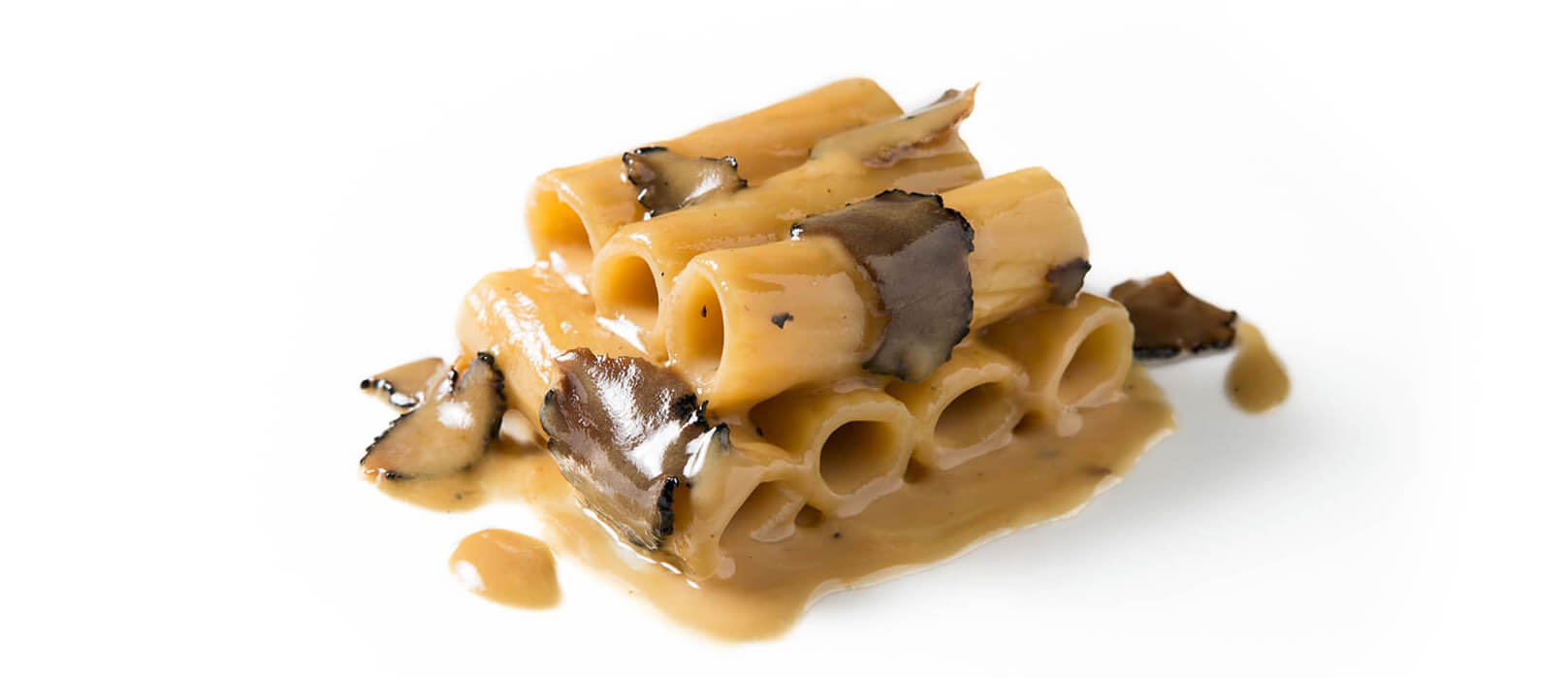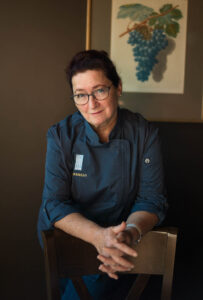
At Acquerello in San Francisco, Chef Suzette Gresham’s Faux Foie Gras Pasta Leaves a Lasting Impression
by Michelle M. Metter

I MET CHEF SUZETTE GRESHAM around 13 years ago, and while the exact details of our encounter are now fuzzy, the experience of tasting her decadent faux foie gras pasta—one of the most epic bites of food I’ve ever had—has been imprinted in my memory ever since. An Antonin Carême Medal recipient and one of only four female chefs in the United States to achieve two Michelin stars, Gresham’s San Francisco restaurant Acquerello is an icon to locals and culinary travelers alike— and the pasta, which has been on the menu for more than 20 years, is likely its best-known and most beloved dish.
When she created it years ago, Gresham turned to a cookbook by the late Italian chef Gualtiero Marchesi, of whom she was an avid admirer, for guidance and inspiration. “Chef Marchesi was the father of minimalist cooking, preparing uncomplicated but modernized versions of classic dishes that always managed to capture [their] essence . . . without losing [their] soul,” she says. Although his recipe featured fattened goose liver, the California ban on the product called for ingenuity: “I modified it to use fresh [unfattened] duck liver instead, making it reminiscent of foie gras.”
To make the dish, Gresham begins with high-quality dried rigatoni and creates a compound butter with the duck liver. She then prepares an uber-rich and unctuous sauce, adding cream, Marsala, and black truffle to the butter before tossing it with the pasta and finishing with a drizzle of truffle oil.

Wine director Gianpaolo Paterlini’s pairing for this dish, a wine named Torcolato from Italian winery Maculan, is a mainstay at Acquerello. Located in the Breganze DOC in the Veneto region, Maculan has specialized in sweet wine for over five decades; Torcolato features Vespaiola grapes that are left to dehydrate in the winery, hanging or in flat baskets, allowing them to develop up to 20% botrytis. The result is concentrated but not cloying, with a sweetness that serves as a welcome contrast to the intensely savory liver and black truffles as well as refreshing acidity that helps to cut through the dish’s richness.
To conceive yet another pairing, I enlisted the help of Geralyn Brostrom, managing director of Italian Wine Central, an online resource and database that oversees several education initiatives focused on Italian wines. Here’s what she said: “When I taught at [the Culinary Institute of America], the chef-instructors urged us to consider more than just wine color or sweetness when pairing. [You should] understand the wine’s and the dish’s components, including weight. While the portion size may be restrained, the dish is not—it is loaded with savory flavors, rich texture, and distinctive truffle aromas. Gianpaolo knows his pairings, but if you are compelled to stray, you needn’t go far from the Veneto. Next door in Friuli, the richer Friulano-based wines from Marco Felluga or Prinčič are always meticulously crafted, just like Suzette’s dish. Tramin’s Alto Adige Stoan is an exotic but balanced blend that will face off against the dish nicely, bringing the acid you need to stay refreshed. An aged, complex sparkling wine from Trento such as Ferrari’s Trento Brut Riserva del Fondatore will [also] bring that acidity to the table along with a host of complementary flavors for a special treat.”
